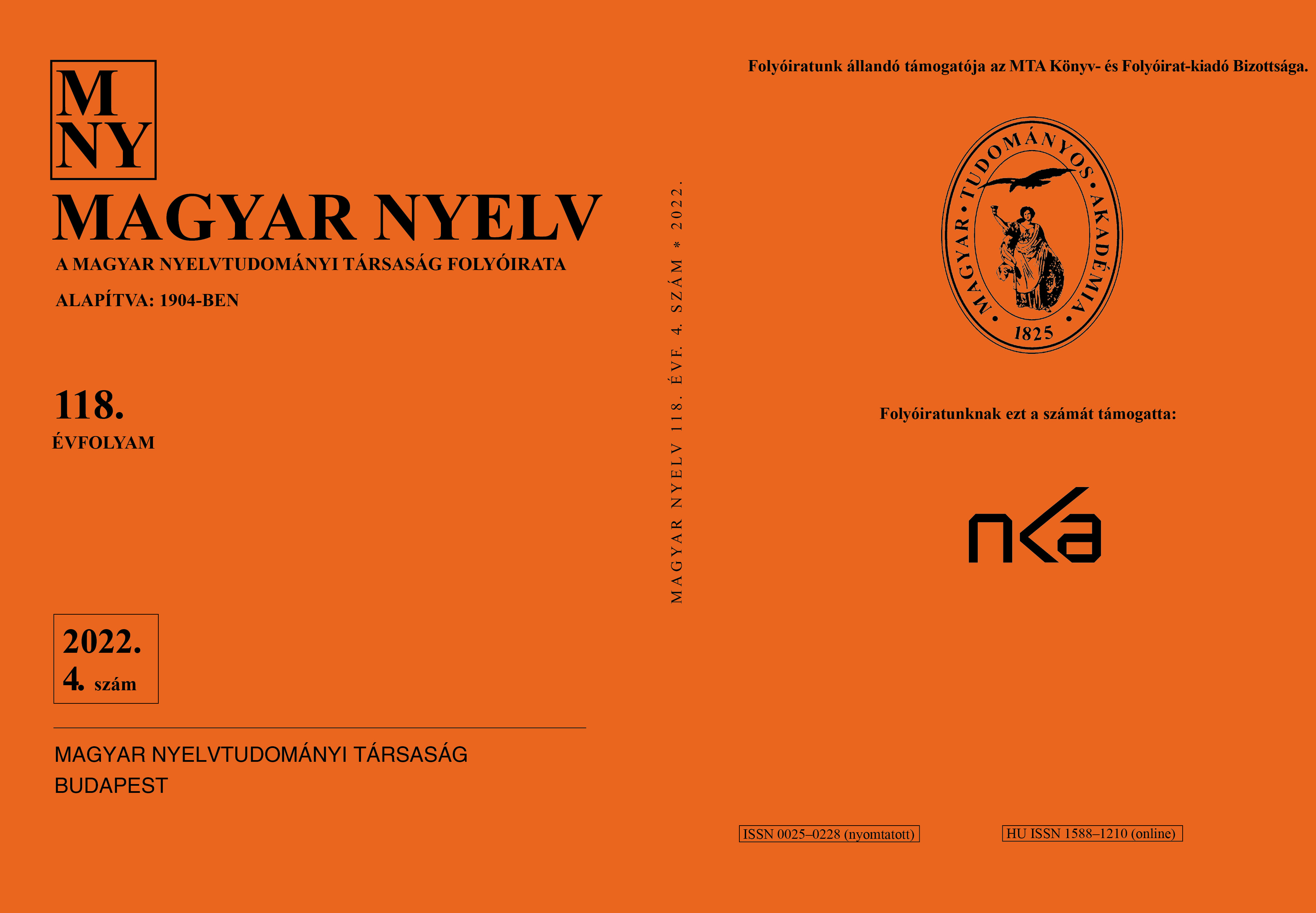Borders, walls and fences in Hungarian press discourse on migration in 2015
Part 1
DOI:
https://doi.org/10.18349/MagyarNyelv.2022.4.419Keywords:
discourse, linguistic discourse analysis, migration, border, conceptualizationAbstract
Borders between countries and states or passing through them has been a pivotal point in the Hungarian media discourse on migration since 2015. The aim of this study is to primarily rely on the relevant German linguistics literature and with the help of linguistic tools to reveal which patterns of knowledge, thinking and values were conveyed in the Hungarian-language press discourse on migration on borders and border protection in 2015. The theoretical and methodological background of the study is provided by descriptive linguistic discourse analysis, the analyses focus on vocabulary units. The research corpus is a thematic, electronic corpus that includes nearly 5 000 online press texts published in Hungary. The quantitative and qualitative analyses carried out on the corpus reveal patterns of language use of the words border, border fence and border closure in the examined discourse, from which it can be deduced how Hungarian society thinks about the concepts denoted by the words and how it relates to their candidates.
Downloads
Published
Issue
Section
License
Copyright (c) 2022 Roberta Rada

This work is licensed under a Creative Commons Attribution-NonCommercial-NoDerivatives 4.0 International License.
Magyar Nyelv is a Diamond Open Access periodical. Documents can be freely downloaded and duplicated in an electronic format, and can be used unchanged and with due reference to the original source. Such use must not serve commercial purposes. In the case of any form of dissemination and use, Hungarian Copyright Act LXXVI/1999 and related laws are to be observed. The electronic version of the journal is subject to the regulations of CC BY-NC-ND (Creative Commons – Attribution-NonCommercial-NoDerivatives).
The journal permits its authors, at no cost and without any temporal limitation, to make pre-print copies of their manuscripts publicly available via email or in their own homepage or that of their institution, or in either closed or free-for-all repositories of their institutions/universities, or other non-profit websites, in the form accepted by the journal editor for publication and even containing amendments on the basis of reviewers’ comments. When the authors publicize their papers in this manner, they have to warn their readers that the manuscript at hand is not the final published version of the work. Once the paper has been published in a printed or online form, the authors are allowed (and advised) to use that (post-print) version for the above purposes. In that case, they have to indicate the exact location and other data of the journal publication. The authors retain the copyright of their papers; however, in the case of an occasional secondary publication, the bibliographical data of the first publication have to be included.



